ON THE RECORD: COMPLETE TEST OF THE 2006 YAMAHA YZ250
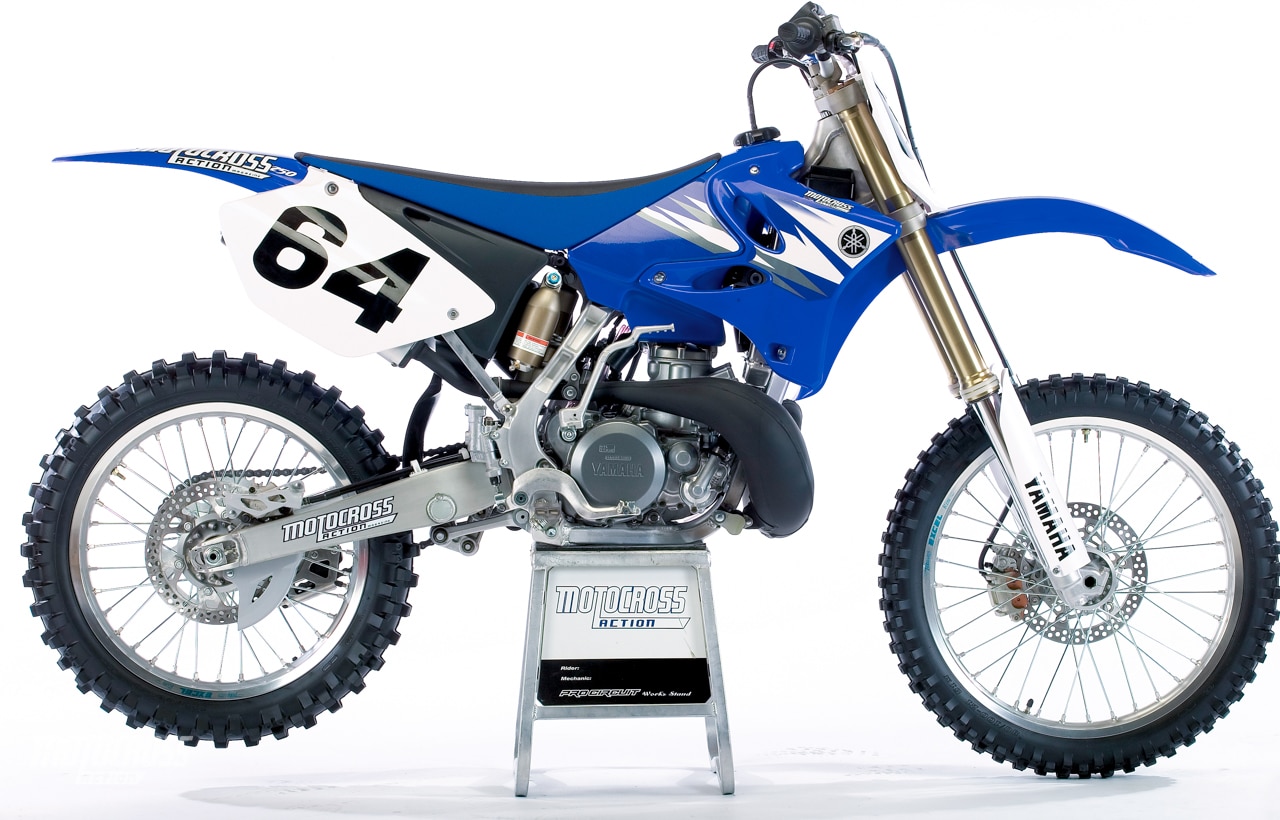 This test about the 2006 Yamaha YZ250 was in the 2005 October issue of Motocross Action Magazine. Get your MXA subscription today.
This test about the 2006 Yamaha YZ250 was in the 2005 October issue of Motocross Action Magazine. Get your MXA subscription today.
The YZ250 is the poster boy of the two-stroke world. Yamaha deserves props for the technical effort they put into designing, building and promoting the aluminum-framed YZ250. The powers-that-be at Yamaha have a rep for going against the grain—and being richly rewarded for their contrarian thinking. Yamaha was the first major manufacturer to build a hardcore four-stroke motocross bike.
At the time, the 1998 YZ400 was deemed folly by the other members of the Big Five. But, it changed the face of the sport. Then, in 2005, Yamaha totally redesigned their two-strokes with a creative plug-and-play aluminum frame. Given that two-strokes were dying on the vine, Yamaha’s investment in two-stroke technology was considered suicidal by their competitors, who were cutting back, not gearing up. Surprise! Yamaha sold 50 percent more YZ250’s in ’05 than they did in ’04. In the end, Yamaha’s bold move increased their market share in the two-stroke world—market share they stole from every other brand.
Yamaha rolled the dice in 2005 with the YZ250, and the 2006 Yamaha YZ250 is the result of Yamaha’s gamble.
Q: IS THE 2006 YZ250 ENGINE FASTER THAN THE ’05?
A: No, it is not faster than the 2005 YZ250 engine. It’s not even faster than the 2004 YZ250 engine. Heck, it’s not even faster than the 2003 YZ250 engine.
Q: DID YAMAHA MAKE ANY CHANGES TO THE 2006 YZ250 ENGINE?
A: When it comes to parts, pieces and porting, the 2006 engine is a repeat of the 2005 engine, which was identical to the 2004 engine, which was a carbon copy of the 2003 engine. Don’t fret, it is different from the 2002 Yamaha YZ250 powerplant.
Q: DOES THE YZ250 HAVE THE BEST ENGINE IN THE SPORT?
A: The correct answer is yes, but you could make the case that the 2004 Suzuki RM250 powerband gives it a run for its money.
Q: WHICH ENGINE IS BETTER? THE YZ OR RM?
A: The MXA wrecking crew is split on this matter. Half of the test riders favor the broad, responsive and tractable YZ250 powerband. It makes awesome power at every point on the curve. It cracks 30 horsepower at an ultra-low 5700 rpm (the RM250 doesn’t break 30 horsepower until 6400 rpm), peaks out at 46.4 horsepower at 8600 rpm (our 2006 RM250 made 46.2 at 8500 rpm) and doesn’t give up the ghost until 9700 rpm (the RM backs down at 9800 rpm).
The difference between the two engines isn’t mechanical. Why not? That’s simple. The Suzuki RM250 is as close a copy of the YZ250 engine as Suzuki could make without getting lawyers involved. Except for power valve actuators, the RM250 cylinder is a clone of the YZ250 jug.
Where they differ is in philosophy. The YZ250 is the King of Breadth. Its power builds right off the bottom and churns through a long meaty pull. The RM250 is the King of Quickness. Its power comes on quicker and turns over fast. It’s snappier, but not as broad.
Which is better? It depends on the test rider’s personal taste. Ginger or Maryanne?
Q: WHAT ABOUT THE JETTING?
A: Yamaha plays their jetting game cards very close to the vest. On a warm day the jetting is perfect, but in cold weather or under a load, it tends to be on the lean side. For most situations, raising the needle will work, but if you add an aftermarket pipe, ride in sand, or ride at elevation, you’ll need a bigger main.
Q: HOW GOOD IS THE YZ250 GEARING?
A: We added one tooth to the rear sprocket. It punched up the acceleration in second gear and brought third into play sooner. Faster riders, featherweight riders and fast tracks work best with the stock gearing.
Q: ARE THERE ANY CHANGES TO THE YZ250’S ALUMINUM FRAME?
A: No.
Q: ARE THERE ANY CHANGES TO YAMAHA’S ROLLING CHASSIS?
A: Yamaha made ten changes to the 2006 YZ250.
(1) Suspension. The fork and shock are totally new for 2006.
(2) Shock spring. All 2006 YZ’s will have titanium shock springs. They save over a pound.
(3) Front brake lever. Yamaha redesigned the front brake lever to remove the thin portion by the rider’s index finger.
(4) Quick-adjust. The on-the-fly clutch adjuster gets a much larger quick-adjust knob to make it easier to manipulate.
(5) Triple clamps. The handlebar mounts are adjustable (across a 10mm range by rotating the bar mounts), and the fork tubes are 2mm farther apart for increased stability.
(6) Rear brake caliper. The rear brake caliper has been lowered for more clearance against the silencer. The pad material and bleed screw are updated.
(7) Saddle. Yamaha used softer seat foam for 2006, but they added 10mm more of it to the center of the seat.
(8) Plastic. There is a new front number plate and front fender. You can tell a 2006 front plate from the old version by the crease down its centerline.
Q: ARE KAYABA SSS FORKS BETTER THAN SHOWABA AOSS FORKS?
A: How good are you at deciphering Yamaha’s acronyms? Do you know what BASS, YPVS or AOSS mean? BASS stands for Brake Assisted Suspension System. YPVS is Yamaha Power Valve System. AOSS was Air/Oil Separate System. BASS and AOSS are ancient history–even though AOSS was brand-new in 2005. What replaces AOSS? The acronym SSS.
Kayaba’s 2006 damping system is labeled SSS (Speed Sensitive System). We are happy to say that speed-sensitive damping is a big plus for Kayaba’s forks.
Q: WHAT’S SO HOT ABOUT THE SSS VERSUS AOSS?
A: There are two types of damping: position-sensitive and speed-sensitive. Last year’s AOSS forks were 70 percent position-sensitive. What does that mean? The damping rates were dictated by the position of the fork’s piston inside the cartridge rod. In simple terms, the farther the piston moved down in the cartridge rod, the stiffer the damping.
The 2006 Kayaba SSS forks are 90 percent speed-sensitive. Switching from 30 percent speed-sensitive damping to 90 percent for 2006 means the forks will stay higher in their stroke, have a more linear damping rate and resist bottoming. Speed-sensitive damping gets its name because the damping rate is determined by the speed at which the piston moves through the cartridge rod.
Q: WHAT IS LINEAR DAMPING?
A: With every model year, Yamaha has tried to lessen the YZ fork’s tendency to bottom. The SSS’s speed-sensitive damping is an all-out attack on the longtime YZ bugaboo.
Yamaha’s speed-sensitive damping has a more linear damping curve. A linear curve gets steadily firmer as it goes. It gets stiffer at the same rate in the first half of the travel as in the second half. This is night-and-day different from the 2005 AOSS fork’s progressive damping curve. Last year’s progressive curve started out very light, remained light through the midstroke, and then suddenly got much stiffer in a short period of time.
Q: WHAT IS WRONG WITH PROGRESSIVE DAMPING?
A: The problem with a progressive damping curve is that the fork has a tendency to hang down in the first half of its travel (courtesy of the light damping). When a fork hangs down in its stroke, it uses up potential bump absorbing travel. Yamaha’s goal with the SSS forks is to have firmer damping at the beginning of the stroke so that the fork doesn’t react like a runaway train at the end of the stroke. The 2006 YZ250 fork rides higher in the stroke over small bumps, so that it can re-cock to its maximum travel more fully in preparation for big hits. This balances out the chassis under acceleration and eliminates diving under braking.
In our opinion, the SSS forks are better on every size bump and work with the chassis instead of against it. The damping is regulated in such a way that the spring rate had been reduced from 0.44 kg/mm to 0.43 kg. They resist bottoming, absorb little bumps and don’t get harsh over the medium-sized stuff. The average rider should start with the compression on 12 out and the the rebound on 10 out.
Q: WHAT ABOUT THE SHOCK?
A: Yamaha is offering something special for 2006—works technology. YZ250 owners will get three factory tidbits directly off of Chad Reed’s YZ250 shock.
(1) The 2006 shock has an 18mm shock shaft. It is 2mm larger than last year’s shock shaft. The larger shock shaft displaces more oil, which means that more oil is pushed through the valving sooner, which results in a more sensitive feel on small chop.
(2) All the internals parts of the YZ250’s Kayaba shock are Kashima-coated to reduce friction. In addition, the shock reservoir has been increased in volume by 30 percent larger reservoir to help control the heat
(3) The shock spring is made from titanium, but not just any titanium. This isn’t porous Russian Ti or low-dollar Chinese metal, it is high-quality, aircraft-grade, American-made, titanium wire that is shipped to Japan for coiling. It is rated as a 4.9 kg/mm spring.
It is a very good shock. We ran the race sag at 100mm, high-speed compression on one turn out, low-speed compression on 11 clicks out and rebound on 9 clicks out.
Q: HOW DOES THE YZ250 HANDLE?
A: If you liked last year’s YZ handling, you will like this year’s chassis because the head angle, trail, front center, wheelbase and rake are identical.
YZ handling is considered the benchmark because it doesn’t do anything wrong. It doesn’t trade straight-line stability for turning prowess (like the RM250). It doesn’t trade turning prowess for straight-line stability (like the KTM 250SX). It doesn’t seek quickness at the cost of accuracy (like the KX). It doesn’t favor rigidity over suppleness (like the CR250).
The YZ250 is a stable platform that is amazingly accurate at turn-in. It requires almost no mid-turn correction from center-out to exit. It is not the best handling frame in every category. It isn’t the quickest turning. It isn’t the most stable at speed. Instead, the YZ250 has just enough of everything to make it a terrific all-around package.
Q: WHAT DID WE HATE?
A: The hate list:
(1) Graphics: You can’t get a 50th Anniversary yellow-and-black YZ125 or YZ250. The anniversary editions are for the four-strokes only. Too bad.
(2) Rear brake pedal: For some reason it was tucked in too much. We bent it out to make it more accessible.
(3) Titanium footpegs: We’d be willing to trade the titanium footpegs in for 57mm steel pegs. Until then, Lightspeed will sell you a set for $99.
(4) Shock spring: If you weigh over 180 pounds you will need a stiffer shock spring.
Q: WHAT DID WE LIKE?
A: The like list:
(1) Suspension: SSS is better than AOSS. Although we’d like to give BASS another shot.
(2) Bar mounts: Finally the bar mounts are removable. That means that you don’t have to buy a new top triple clamp to switch to 1-1/8-inch bars. Additionally, the stock mounts can be rotated forward 10mm.
(3) Handlebars: Renthal, enough said.
(4) Rear tire: The D739 hard track tire has been replaced by a intermediate terrain D756.
(5) On-the-fly clutch adjuster: The big boy adjuster is much easier to use.
Q: WHAT DO WE REALLY THINK?
A: This is a remedy for the four-stroke doldrums. You know the symptoms. You can’t get the droning of four-strokes out of your head. You crave kick-in-the-pants acceleration. You want a bike that is 13 pounds lighter and doesn’t stall in the corners. Our prescription? Pop one Yamaha YZ250 under your fanny and kiss the doldrums goodbye.



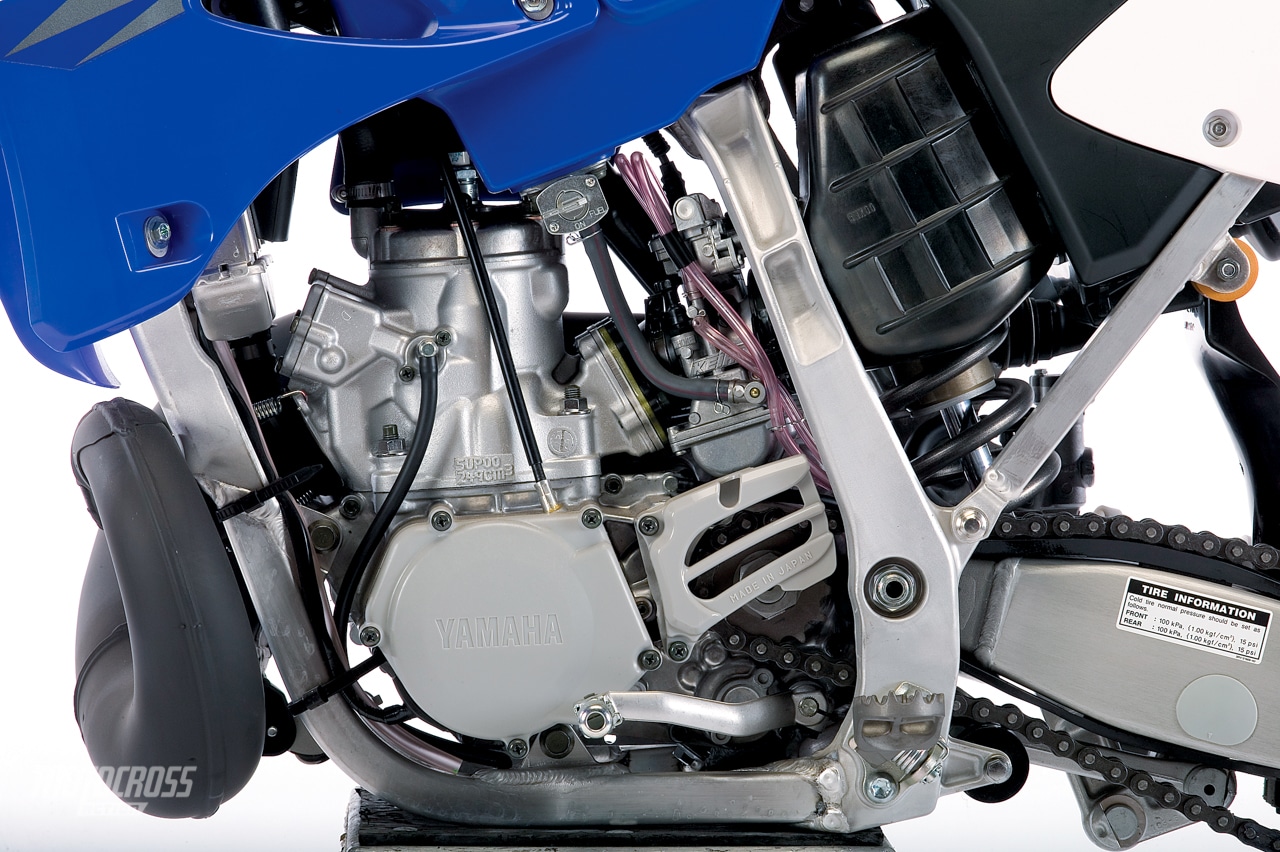

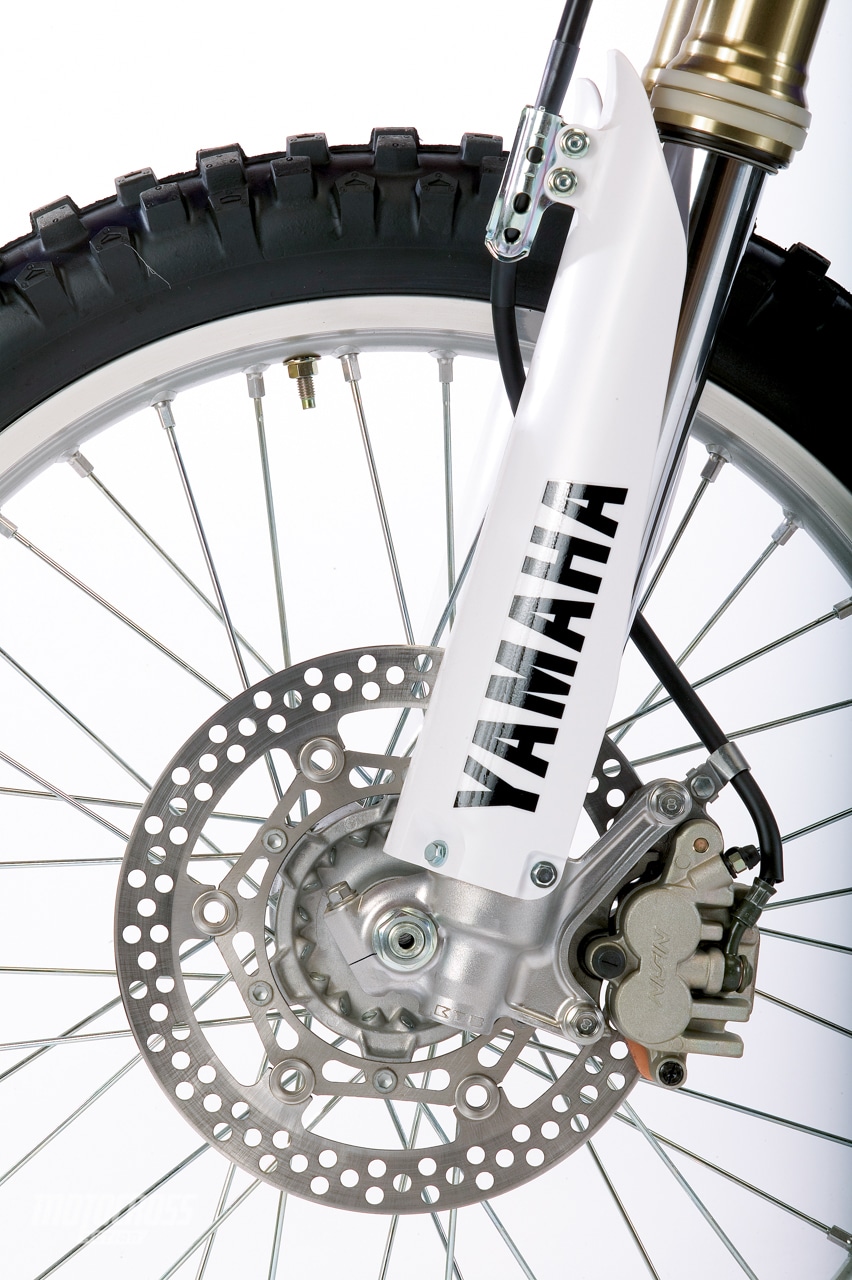

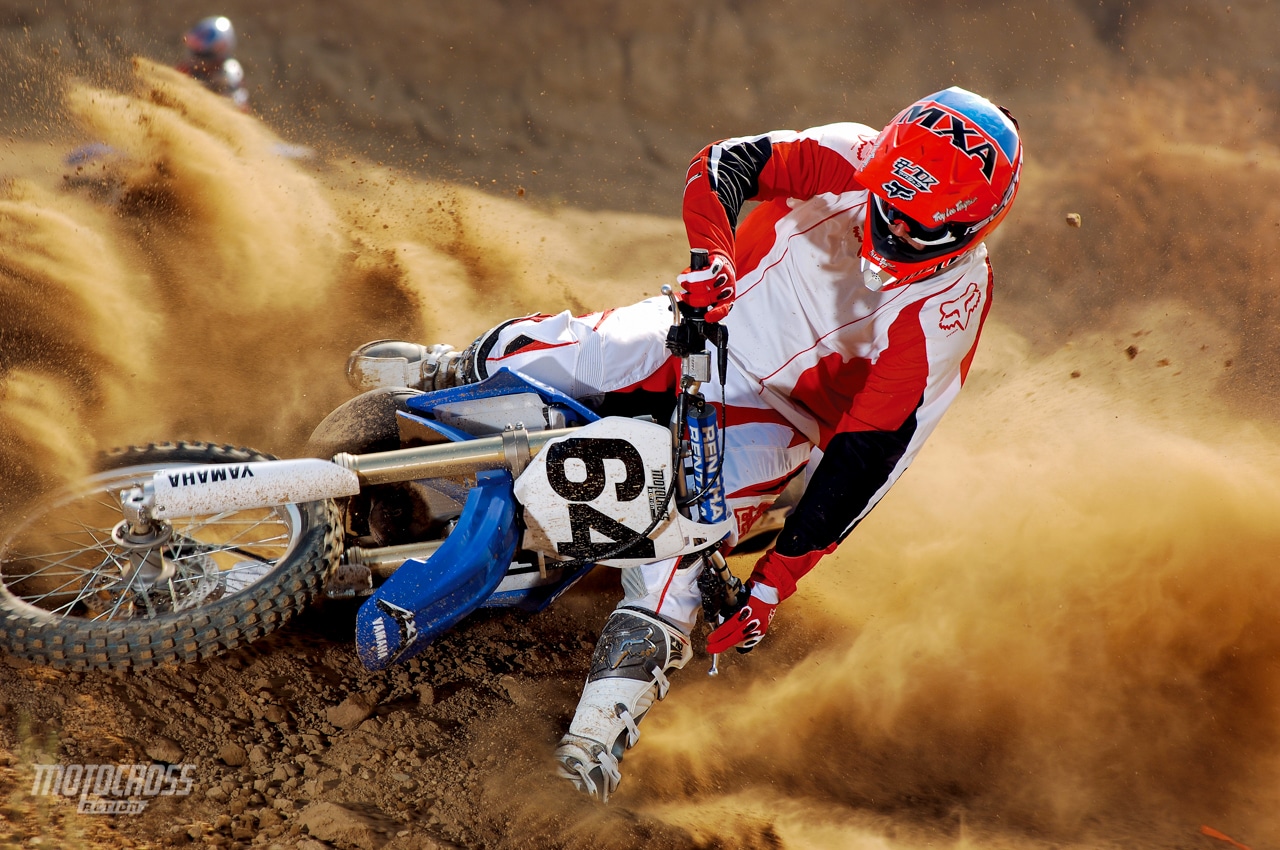
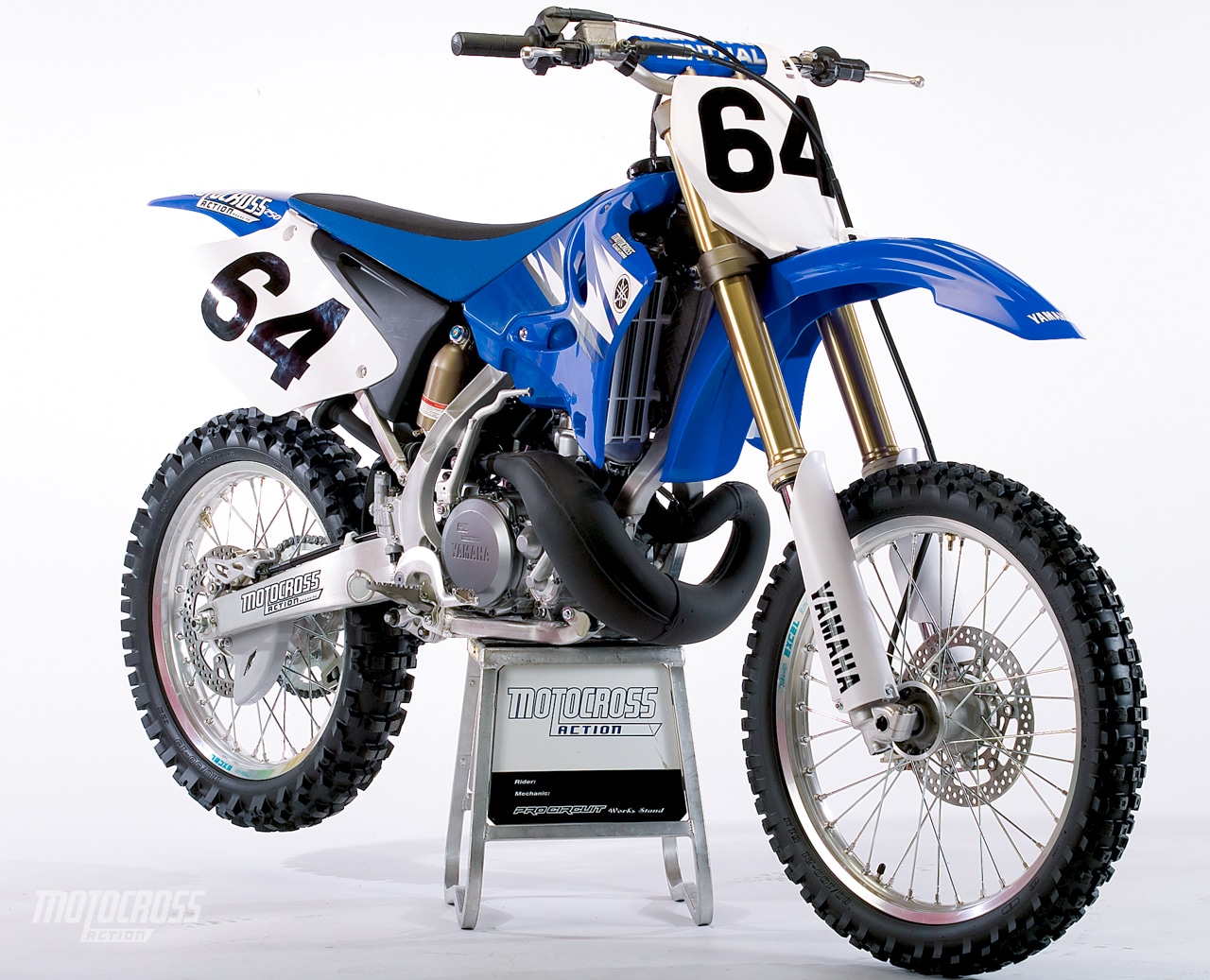
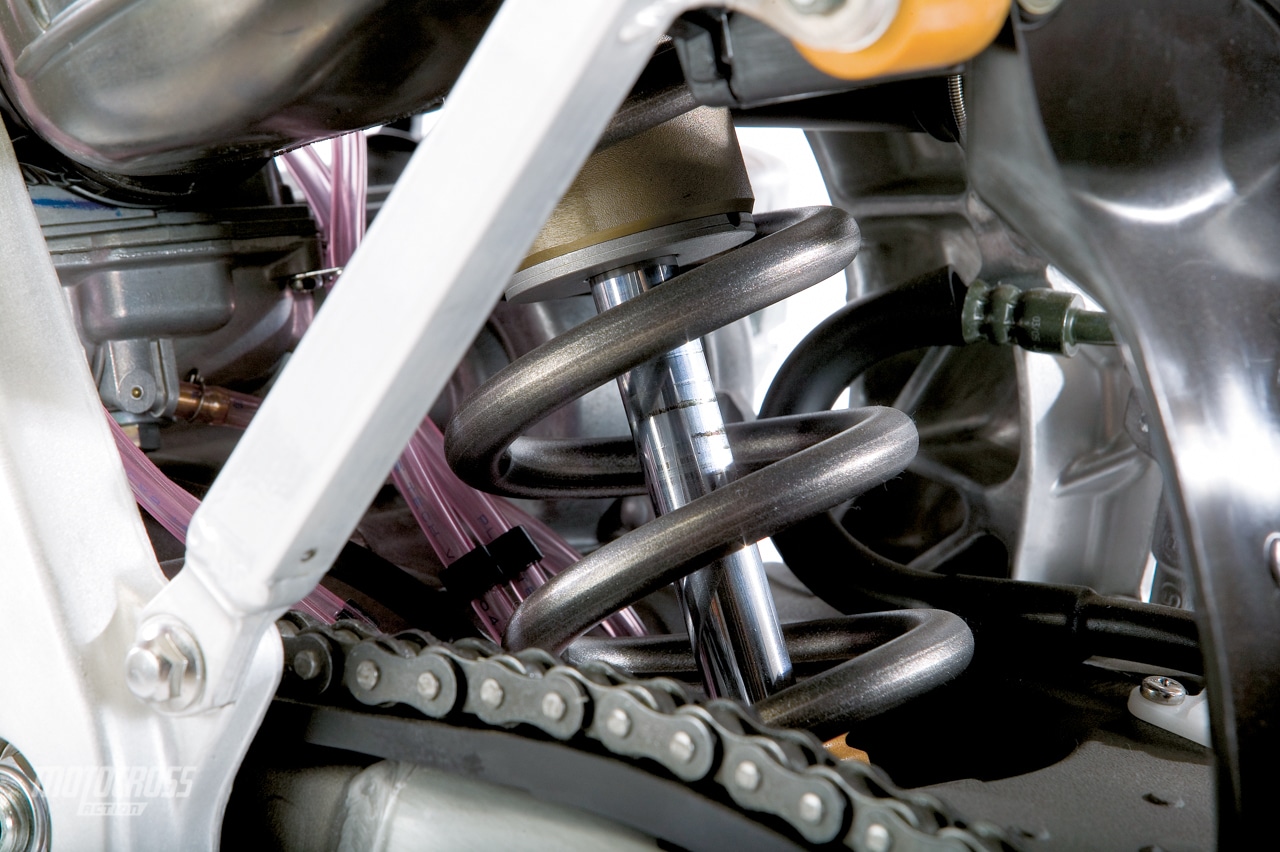



Comments are closed.